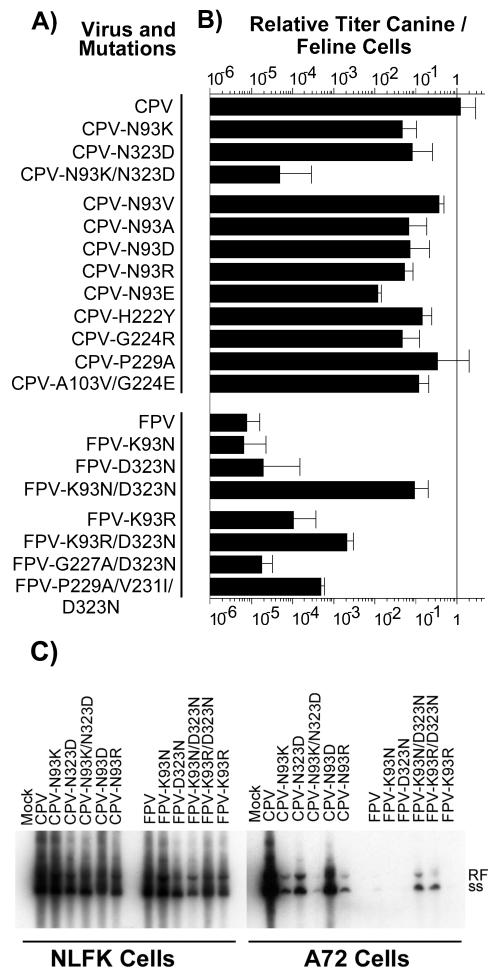FIG. 2.
Mutants prepared in these studies and their relative titers in feline and canine cells. (A) The genetic background (CPV or FPV) of each virus is indicated, as well as the changes(s) introduced into the VP2 sequence. The single-letter code for amino acids was used, with the letter before the number indicating the amino acid of the wild-type virus and that following indicating the change(s) introduced. (B) Relative infectivity of each virus for canine cells shown as the ratio of the TCID50 titer of the virus stock in A72 cells to that in NLFK cells. Error bars show one standard deviation of the mean for at least three independent experiments. For the CPV-P229A mutant, data from one (ratio, 2.8 log10) of seven independent experiments was excluded from the analysis. (C) Infection and replication in NLFK and A72 cells of selected viruses examined by the production of viral RF and single-stranded DNA (ss). Cells seeded in six-well plates were inoculated with 0.5 TCID50 per cell and were incubated for 2 days, and then the low-molecular-weight DNA was recovered, electrophoresed in an agarose gel, transferred to a membrane, and detected with a 32P-labeled DNA probe. The samples from NLFK cells were exposed for half the exposure of the A72 cell-derived samples.

